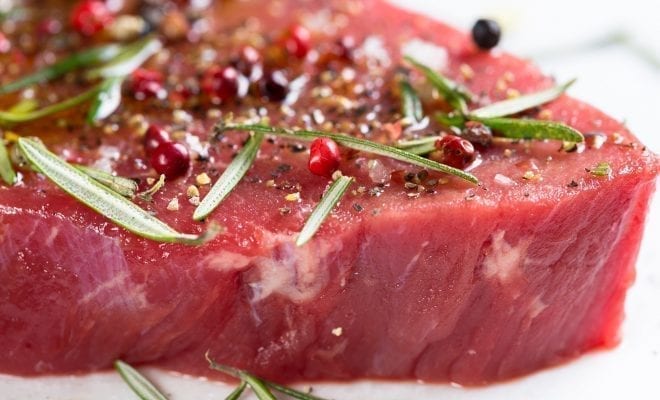
News
Lab-Grown Meat: A Step Towards a Sustainable Future
It is estimated that by the year 2050, there will be 9.7 billion human beings on Earth. With a population of this size, it will require impossible amounts of resources to properly sustain every person. By this time, it will be extremely difficult to keep up with our current levels of consumption, an issue that has prompted us to look into sustainable methods of surviving in a much more crowded world. One interesting venture is that of lab-grown meat, a radical new way to keep up with our increased demand for animal agriculture.
Lab-grown meat is exactly as it sounds – meat grown from animal cells that is pretty much indiscernible from the real thing. These cells are submerged in a growth medium which is essentially a concoction of nutrients similar to what’s found in an animal’s body. In some instances, technicians will collect a small sample of stem cells from a living animal, which can be used to form primitive fibers which eventually bulk up to form muscle tissue. Mosa Meat, a food technology company working on developing lab-created meat, says one sample can yield enough tissue to make nearly 80,000 quarter-pounders.
Widespread adoption of lab-grown meat can result in a number of benefits to the general population. It would essentially eliminate the cruel and unethical treatment of animals raised for slaughter. It could have a major impact on reducing the environmental cost of meat production. Current livestock farms in the U.S. contribute to more than 20 % of overall methane emissions in the country. This figure, compounded by the substantial amounts of fertilizer, fuel, pesticides, water, and land make livestock agriculture an extreme drain on our environment. With lab-grown meat, resources are only needed to generate and sustain cultured cells, making it drastically less resource-intensive.
So what’s stopping us from moving toward a future where lab-grown meat is the norm? There are several issues that must be worked out. Lab-grown meat is still fairly expensive to create due to the complex processes involved. This, however, could change soon, thanks to several startups that are hoping to drastically reduce to price to $3-$5 a pound by the year 2020. Another issue is convincing the public to choose lab-grown meat over the real thing. Lab-grown meat hasn’t yet been able to match the same taste and consistency of real meat, an issue that will most likely need to be fixed before widespread consumer acceptance. Finally, it will have to receive market approval from the FDA and shown to be completely safe for consumption.
Despite these challenges, there are a number of companies continuing to pursue a lab-grown meat future. If successful, we could be in store for a future where unethical animal treatment and the environmental impact of livestock farming could be significantly reduced.





0 comments